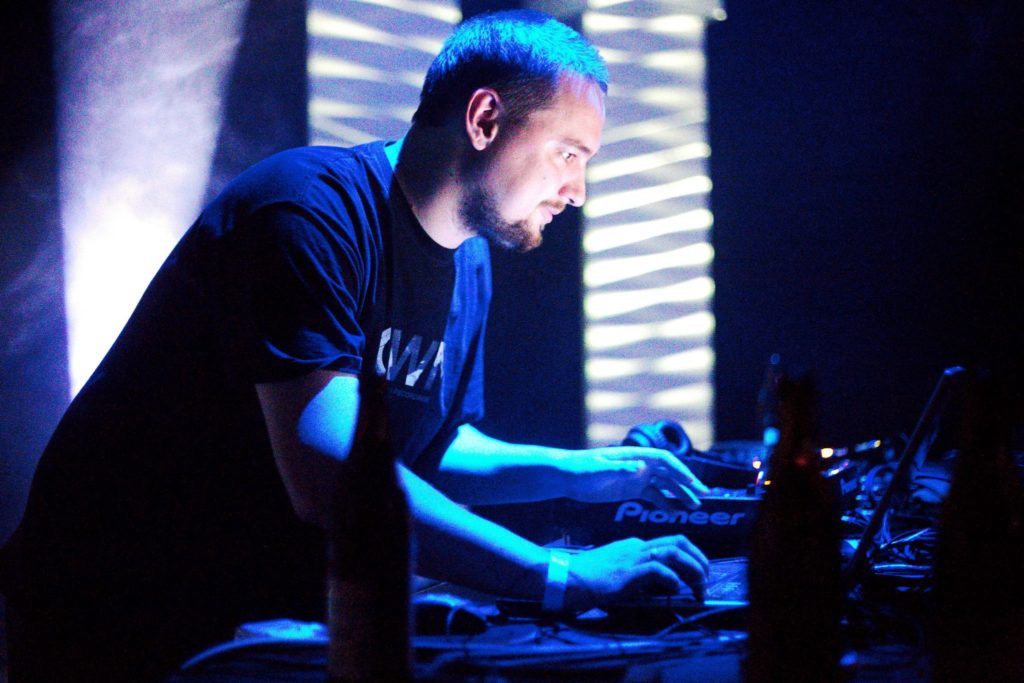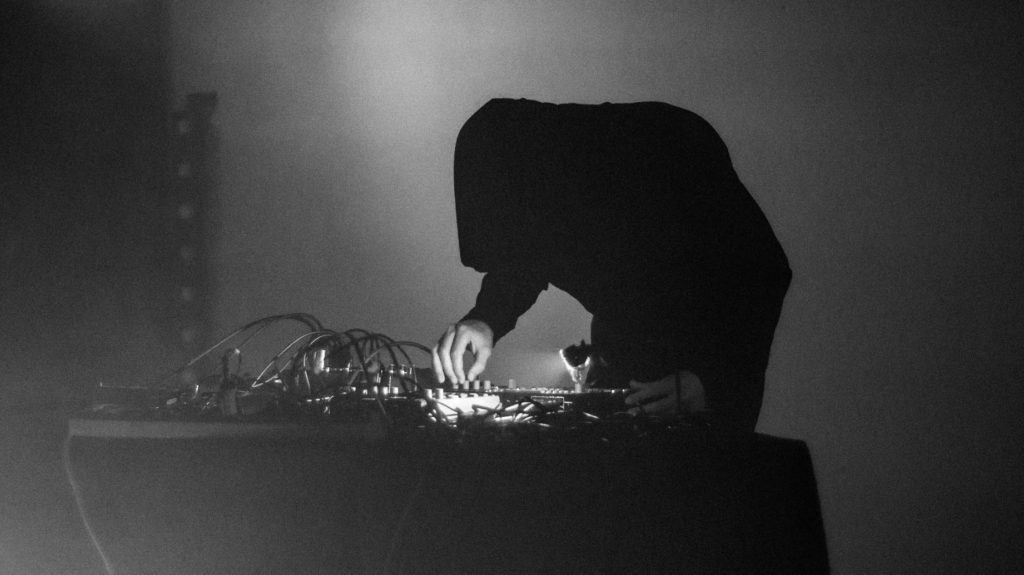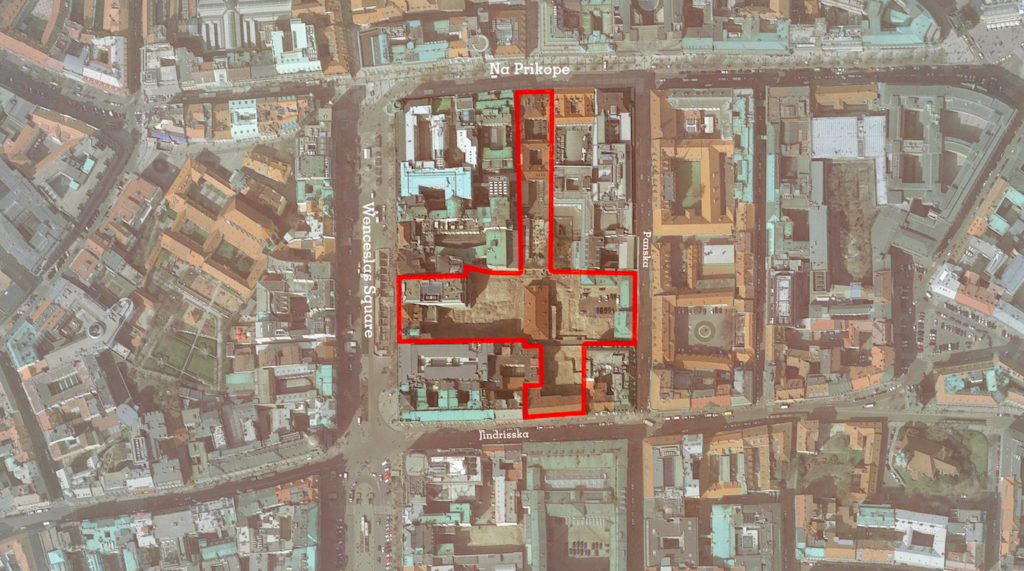Prague Public Transport Company (DPP) announced today to have resumed the operation of the cable car in the Prague Zoo.
At the same time, it will increase the operation of bus line No. 112, leading to the Zoo and Botanical Gardens. However, the cable car to Petřín will reopen on 11 May.
In connection with the gradual increase in the number of public transport passengers, ticket inspectors came back to work on Monday, April 27.
DPP has so far partially deployed them for other jobs related to the COVID-19 pandemic, as filling and distributing disinfectants in the metro stations.
The Museum of Public Transport plans to reopen on Saturday, June 13, while the historic tram line 41 should resume on Saturday, May 16.
From today, shops the size of up to 2,500 square meters that have their own entrance and are not located in large shopping centers are free to reopen, as are driving schools, gyms and fitness centers, although without the use of showers and changing rooms.
The number of coronavirus cases in the Czech Republic reached 7404 on Monday morning, up by 52 on Sunday, the smallest daily increase since March 14.
Over 2,500 people have recovered, 221 people have died.
Despite an increase in the amount of testing, the graph depicting the increase in transmissions is going down from 11 percent to around 5 percent.
According to the Minister of Health Adam Vojtěch (ANO), this means that the Czech Republic has managed to stop the uncontrolled spread of the COVID-19.
“We managed to stop the uncontrolled spread of COVID-19 and we can prepare for a return to normal life in the coming weeks. We are not in the same situation as Italy, Spain, USA or the United Kingdom. The situation is developing very well,” Vojtech said.
Ladislav Dušek, director of the Institute of Health Information and Statistics (ÚZIS), confirmed the data. “We have increased the testing capacity. It is a clear signal that something is happening in the population and that the spread has stopped.”
The reproductive number (R0) of the virus has also decreased, ie the number of people able to infect one person with the disease. It started at 2.64 and now fell to 1.1. The Ministry of Health expects it to decrease to 1.02.
R0 tells the average number of people who will catch a disease from one contagious person. If a disease has an R0 of 5, a person who has the disease will transmit it to an average of 5 other people, as long as no one has been vaccinated against it or is already immune to it in their community.
- If R0 is less than 1, each existing infection causes less than one new infection. In this case, the disease will decline and eventually die out.
- If R0 equals 1, each existing infection causes one new infection. The disease will stay alive and stable, but there won’t be an outbreak or an epidemic.
- If R0 is more than 1, each existing infection causes more than one new infection. The disease will spread between people, and there may be an outbreak or epidemic.
“It does not mean eliminating the virus, but that one person can infect on average one another,” added Dušek. According to him, it is important “to continue to know the behavior of the virus.”
Original projections saw 14,200 infections in the Czech Republic by the end of April, now it has been revised to 10,600.
The Czech Republic had 5,033 confirmed cases of coronavirus infection as of midnight. So far 181 people have recovered from the COVID-19 illness and 91 people have died.
Prime Minister Andrej Babis said the restrictions on movement may be extended until April 1st if the Covid-19 situation does not improve as the country went into a two-week movement restriction period on March 13th.
The government will discuss on Monday the introduction of a Kurzarbeit program – a short-time working arrangement in which civilian employees agree to or are forced to accept a reduction in working time and pay, usually introduced in times of recession.
Kurzarbeit (roughly translated, “short-time work”) is a German government program first used during the 2008 financial crisis that pays roughly two-thirds of an employee’s salary to a company that would otherwise be forced to resort to layoffs in the face of an economic downturn.
By providing for staff to remain on the job (even at reduced hours and salary) Kurzarbeit benefits both employers and employees. Workers maintain a steady stream of income, while companies avoid losing the skills these workers have acquired and which are likely to be needed once an economic upturn arrives.
The Czech Republic’s tough measures to slow the spread of coronavirus may be relaxed somewhat in three weeks, but the country’s borders are likely to stay shut to most travel for months, the head of the country’s crisis committee said on Sunday.
Schools will be closed at least until the end of May, and borders may be shut for tourist travel for many months, or even a year or two depending on circumstances, added Prymula.
The number of confirmed coronavirus cases in the Czech Republic reached 1120 on Sunday, after an increase of 158 cases on Saturday.
Passengers in Prague’s metro can now use the LTE mobile network on line C from Roztyly to Nádraží Holešovice. Until now, the signal only reached the Museum station. The section between Bořislavka and Motol Hospital on line A is also covered. In total, 16 signal LTE services in the metro station and adjacent tunnels still need to be covered at the end of 2021.
In the upcoming weeks, operators will continue to fine-tune the technology in the newly covered section. Customers can, therefore, use the latest generation mobile services in the Bořislavka – Motol Hospital (4 stations) on line A, in the Museum – Roztyly (8 stations) on line C and from today also in the Muzeum – Nádraží Holešovice on line C (4 stations).
By the end of March 2020, the 4G signal will also be available for passengers in sixteen stations at the centre of Prague: six stations on line A between the Muzeum and Dejvická and ten on line B between the Smíchov train station and Palmovka. Passengers will be able to use the high-speed LTE network in a total of 32 metro stations and adjacent tunnels in spring, which is more than half of the entire extent of Prague metro.
Also, 29 stations and adjacent tunnels will be equipped with state-of-the-art facilities to cover the LTE networks throughout the entire metro area. The original plan predicts the coverage of the 4G signal in all sections by the end of 2022 at the latest. If work continues on the same path as before, passengers will be able to use the signal in all sections of the subway at the end of 2021. “We live online, and the signal in the Prague metro was supposed to be ordinary for a long time. Unfortunately, Prague fell asleep in this field for several years,” said Petr Witowski, General Manager of Prague Transport Company (DPP).
The upcoming new line D could also be covered from the beginning. “The consortium of operators has successfully tested the service on routes A, B, and C, and we are ready to use the experience we’ve achieved in covering line D. We would like to get involved to make the construction really useful,” said Lubor Žatko from T-Mobile and Slovak Telekom on behalf of the Consortium of Operators.
Last April, DPP (Prague Transport Company) approved a contract with a consortium of operators for 20 years; during the first ten years, operators will pay CZK 120 million to DPP. Initially, the operators talked about covering the entire existing metro network by the end of 2022. They now count on this date happening one year earlier.
By Nico Fontana – Anglo American University
Anyone who is bored with the monotony of most popular electronic music will find solace in the Lunchmeat Festival, a diverse landscape of visual/sound artists and electronic musician/composers. Spanning almost a week of programming, the festival began on October 30th at the Planetarium. However, the main program commences Thursday, Oct. 3rd for three full evenings of experimental electronics, and all in celebration of the festival’s 10th anniversary.
Deep beneath the National Gallery’s Trade Fair Palace, the Lunchmeat Festival is also appropriately held in the Studio of Heroes, a massive, cavernous industrial space with rusting and corroded metal pipes contrasting with its modern-designed seating like an amphitheatre, while the cinema-quality projections fully bring to life the entirety of the main concert hall.
One of the most anticipated avant-garde artists this year are Lotic, from the USA, but now based in Berlin performing “Endless Power” with music from their new album “Power” in collaboration with the visual artist Emmanuel Briad. Lotic’s album was made during a period of homelessness in Berlin, so it is a deeply personal and heartfelt portrayal of a period of volatility and instability with the issues of gender and racial discrimination as significant themes reflected in intimate or pained and sparse vocals and dark cacophonies of tribalistic drums and violins.
Another significant experimental artist in electronica is the duo Lakker, who will be performing their newest album “Epoca” on the closing evening. Lakker is formed by the techno and experimental artist Eomac with the composer Arad offering a particularly unique almagamation of styles and influences forming highly complex and danceable tribal rhythms with progressively complex melodies taking inspiration from folk and classical music. Their use of physical instrumentation also gives the music a certain scale and shining grandiosity.
Catarina Barbieri, an Italian composer, who makes astute and hyper-complex use of synthesizers and sequencers will perform “Time-Blind” alongside the multimedia artist Ruben Spini. Barbieri is one of the artists in the festival most loved and acclaimed by critics. The complexities of her melodies create a synthetic atmosphere, which mesmerize and capture the attention of listeners in an almost meditative way, and far from the sonically chaotic others.
Those who are less interested in experimental electronica will rejoice at some of the more conventional DJs on the program including LSDXOXO with his chaotic footwork and drum & bass set. This New York DJ/producer has gained mainstream notoriety following his Boiler Room performance. Another household name on the techno scene is the Swedish DJ and artist Varg, and the producer HDMIRROR from South Africa will bring his rave, dance and gabber influenced auditory assault. Other techno sets by artists including No Idols, Barely Legal, and Valoa will surely be a delight to the less musically masochistic listeners in the audience.
With such a multitude of artists from almost every continent of the world, the Lunchmeat Festival will once again showcase the potential that visual accompaniment to audio can have in terms of capturing attention, and immersing the audience in performances. Come with an open mind, and you will be rewarded generously by the experimentation that this festival has to offer.
For more information see the website



Prague Zoo celebrates the 88th anniversary of its opening today Saturday, September 28, which is a national holiday.
The zoo has a rich history and on Thursday viewers are able to get a sense of it through a number of exhibitions. Events included special shows for children and adults, music.
Prague Zoo was opened to the public in 1931, but its history reaches much further back in time. That is to the year 1881, when Count Sweerts-Sporck (hrabě Špork) initiated the establishment of a zoo in Prague. The process took place over the following decades and involved, among other things, the emergence of The Association for the Establishment of a Zoological and Acclimatization Garden.
The Indonesian Jungle, which is currently breeding Komodo Dragons, a relatively new Sea Lion exhibit, and Monkey Island are among the newer additions to the zoo.
A popular attraction of the zoo is a ride on the local chairlift which transports visitors from the lower area of the zoo to the upper section.
Prague Zoo currently covers 58 hectares with 50 hectares used for exhibits. It has over 4,700 animals from 681 species, including 144 species listed as threatened. The zoo has 12 pavilions and over 150 exhibits. It has been particularly active in the preservation of the Przewalski’s horses, which are slowly being returned to the wild.
Prague Zoo last year was named the fifth best zoo in the world by travel website TripAdvisor. The ranking is based on visitor reviews. The zoo took fourth place in 2015 and seventh place in 2014.
For more information, visit www.zoopraha.cz


Czech developers Trigema have proposed a post-apocalyptic vision of an enormous rusty shipwreck sculpture leaning upright against, and seemingly crashing into, a high-rise building.
“This is something we wanted to do as a memento which connects art and architecture,” said architects Black N’ Arch in collaboration with sculptor David Černý, about the climate change-inspired Top Tower proposal which, if realized, could become the tallest building in the Czech Republic. “It is actually a post-apocalyptic message about what is happening around.”
The Top Tower will offer views over the city from a public viewing point accessible via exterior lifts, according to a statement from Trigema.
It will primarily be used for rental housing, with offices and a cultural center on lower levels. There will also be a publicly accessible roof garden, and shops on the ground floor.
To some, the building evokes feelings of the inevitability of man’s eventual fall.
“We have been preparing the Top Tower project for more than two years and the final version was preceded by eight other alternative proposals,” said Marcel Soural, Chairman of the Board of Trigema.
If approved, construction could start in 2021 and take three years, according to Trigema.
The investor for the CZK2 billion project was first unveiled at an international urban conference last week.
Asked about whether City Hall has authorized the construction yet, Mr. Císař says that negotiations are currently in their initial phase, but the work could well start soon.



Some 6,000 pubs and restaurants across the Czech Republic take part in the seventh annual Czech Beer Days (Dny českého piva) from September 24 to September 30.
St. Wenceslas Day, the 28th of September, is a national holiday, celebrating Václav I’s legacy of helping unify Bohemia. But he is also considered the patron saint of beer.
Dozens of breweries and microbreweries are participating nationwide in the festival. Pubs, restaurants, and breweries will offer special menus and beers, and meetings with brewers and beer experts.
“We believe that Czech Beer Days will help encourage people to go out more often for their favorite beer. Czechs love Czech beer and Czech beer tradition. We know that favorite pubs, especially for smaller towns and villages, are the center of social and cultural life,” František Šámal, chairman of the ČSPS, said in a press release.
The Union of Breweries and Malt Houses established the Days of Czech Beer festival (Dny českého piva) in his honour seven years ago.
Budějovický Budvar this year is featuring the unfiltered ‘Budvar 33’, so named for its degree of bitterness, thanks to extra Czech hops Agnus.
For more about Czech Beer Days, visit their website or also on Facebook.
The NHL starts its season in Prague on Oct. 4, with the Philadelphia Flyers playing against the Chicago Blackhawks at Prague’s O2 Arena. Tickets were sold out on the Ticketportal network back in March.
“The 2019 NHL Global Series will mark the third straight year, and the eighth season overall, that the NHL has traveled to Europe to play regular-season games. These games reward the legions of loyal and passionate fans in Europe that enjoy live NHL games available via international broadcast partners and the NHL’s streaming service, NHL.TV,” said the NHL in a press release.
“The three games [this] fall will be the 26th, 27th, and 28th NHL regular-season games played in Europe. The Oct. 4 game, between Chicago and Philadelphia, will mark the fifth NHL regular-season game played in the Czech Republic, at O2 Arena in Prague. The two games between Buffalo and Tampa Bay will mark the 12th and 13th NHL regular-season games played in Sweden, and the 11th and 12th games played at Ericsson Globe in Stockholm,” the NHL added.
O2 Arena is one of the most modern multi-purpose halls in Europe, with up to 18,000 seats and built for the Ice Hockey World Championships. The 2003 championship games that were supposed to be held were postponed to 2004, due to construction delays. The arena’s original name was Sazka Arena. O2 Arena is now the home of Prague local team, HC Sparta Prague.
Before the Blackhawks and Flyers play their season openers, they will play exhibition matches in Berlin and Lausanne at the end of September against European teams.
Heatherwick studio has unveiled designs for the regeneration of a 15,000 square meter site at the heart of Prague.
The project will involve restoring a historic 18th-century riding hall as well as a number of surrounding buildings, and the creation of new retail, office and public spaces.
The aim is to bring new life to the city, creating a unique new destination for shopping and work.
Three new buildings will be created to frame a public courtyard and the existing riding hall. Stepped green terraces and staircases will be included to allow people to walk up to the top of the buildings and look out upon the city.
“Savarin has a very special place in our hearts and we feel the huge responsibility that comes with this project,’ says Omar Koleilat, CEO of Crestyl, the project’s developer. ‘We value Heatherwick studio for approaching each project individually, considering the genius loci of the place and offering solutions that breathe life into it. that is also why we admire the studio’s sensitive way to revitalize projects such as coal drops yard and zeitz MOCAA.”
“The project is focused around a series of courtyards and passages that stitch together a site with a number of special heritage buildings. At its heart is the creation of a major new public space, surrounding a historic 18th-century riding hall. As well as restoring this hall and the other historic buildings, we will create three dynamic new buildings which will frame this courtyard and its riding hall. Stepped green terraces and staircases will enable people to walk up the buildings all the way to the rooftops, revealing unexpected new public spaces and views across the city”, said Thomas Heatherwick, founder of Heatherwick Studio.


![]()
During the winter season, Czech Airlines will increase frequencies on flights to Kiev and Moscow. Flights to the capital of Ukraine will now operate up to eight times a week, while Sheremetyevo International Airport in Moscow will be served three times a day.
Czech Airlines will also extend several summer routes into the winter season. Its winter schedule will thus feature flights to Beirut and Odessa, which will operate at least two times a week, and a connection to Keflavík, Iceland, now with a stopover in Copenhagen, which will be available to passengers daily.
Moreover, capacity on three direct routes operated by Czech Airlines will be increased. Beginning at the end of October, selected flights to Budapest and all flights to Düsseldorf will be serviced by larger aircraft, namely Airbus A319 or Boeing 737, replacing the ART turboprop aircraft currently in service.
Smartwings is also increasing the number of flights it operates in its winter schedule. The route between Prague and Rostov-on-Don will now be served three times a week. In addition, Smartwings will operate more flights on the route to St. Petersburg, which will be available every day from the start of the winter schedule, and, as usual, relaunch service to Dubai, United Arab Emirates.
The management of Prague 2 will file a complaint against Lime, the company of electric scooters, due to a violation of conditions. They want the Town Hall to cancel the scooter memorandum. Lime rejects the criticism, stating that they do not break the rules. The scooter regulation is also supported by Prague 1.
The dispute between the Town Hall and the company has lasted for several months, and Prague 2 banned their operation on its territory. The Town Hall has been worried about those people that use the scooters, ride along the sidewalk and also leave them at inappropriate places. Based on an agreement, Lime divided the territory of Prague into green and red zones; the red zone blocks the scooters.
“Lime did not submit any of the required documents. Instead, they restricted the red zone in Prague 2 only to náměstí Míru and its immediate surroundings, Folimanka, Vyšehrad, Havlíčkovy, and Hlavní nádraží. It will continue to operate with the ‘borrow and throw’ system without respecting the requirements of the city district” said Deputy Mayor Jan Korseska (ODS).
Last year, the Municipal Police in Prague 2 sanctioned 194 cyclists and scooters; from the beginning of this year to the 15th of September 1048 offenses were committed according to the Town Hall.
At the same time, the City of Prague 2 requests to terminate the memorandum on the Development of Shared Bicycle Services that establishes the red and green zones mentioned. Nevertheless, the repeal would also affect shared transport services such as Rekola, which provides pink bikes.
“We satisfy the requirements that we signed up for in the memorandum. Therefore, the service is available in limited traffic in Prague 2. We believe that we are right when the scooter service in Prague 2 works as it is now set up. We agree with Prague 2 in welcoming the clarification of this situation,” said Ondřej Široký, Operations Manager of Lime.
In addition to Lime and Rekola in Prague, Car4way and Revolt carsharing services also work. Since April, the Homeport company has entered the Prague market.

